A wedding is one of the most special moments in a person’s life. It’s the legal bond of two people and their journey together.
A journey that cannot be put into words, especially for the ones being wed.
It can certainly be put into photos! That’s where wedding photography plays such a crucial role. Everyone wants to capture this special moment of their life. As a photographer, you have to ensure that the photos are just as special as their day.
These tips will help you do that job successfully. The things we will discuss are –
● A brief intro of wedding photography
● Wedding photography tips for both beginners and professionals
● The importance of post-processing
● Common mistakes to avoid (MUST READ)
Click here to see the table of contents
What Is Wedding Photography?
Wedding photography is a genre of photography that focuses on capturing events and activities involved with weddings, along with the wedding itself. Other sorts of portrait photography, such as a pre-wedding engagement session, may be included. Photographers may also provide narrative-style photography to commemorate the many activities and traditions taking place all throughout the wedding days.
Capturing this moment has now grown into an entire genre, a niche, an industry that thrives. It’s impossible to think of a wedding without some kind of photography, even if it is done by relatives and their smartphones! But that’s rarely the case.
Everyone wants to store this memory in high-quality, captured by seasoned professionals.
The wedding service industry in the US has an approximate figure of 51 billion US dollars. Photography service is a part of that industry and accounts for more than 13% of it! And this is just a U.S. report; think about its growth all around the world. Thus, wedding photography is not to be taken lightly.
Wedding Photography Tips and Ideas: Beginner to Expert Levels
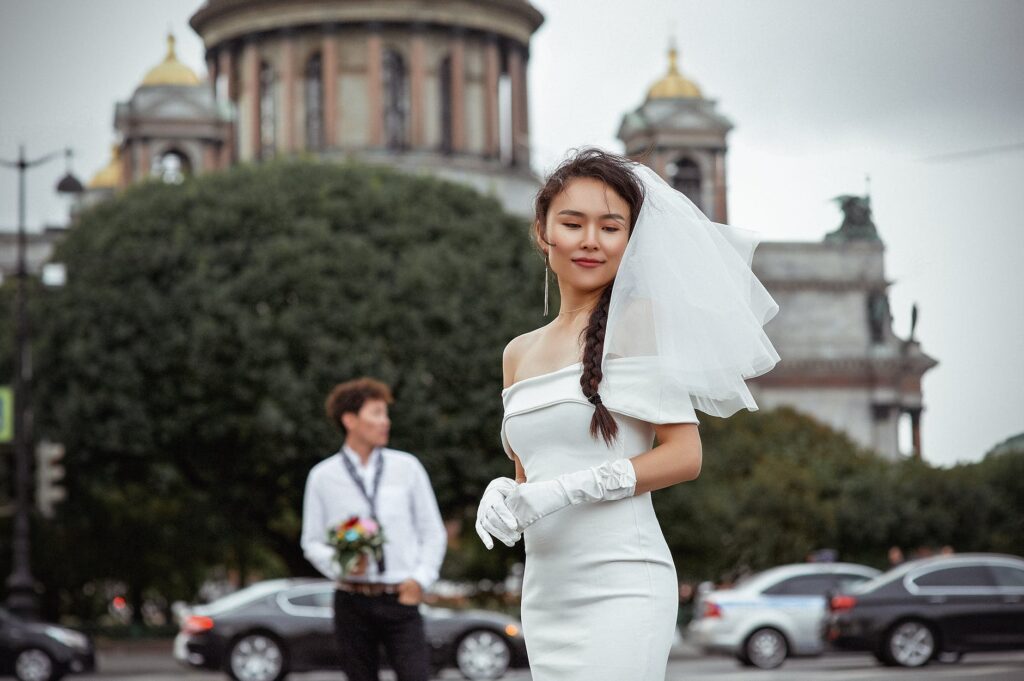
Source: pexels.com
Tips can always enhance your skills for any photographer. When it comes to wedding photography, these tips and ideas are essential as there is a lot more to wedding photography than just snapping pictures. Both beginners and experts can leverage these tips.
Sign a Contract
A promise between a client and a service provider is no less a marriage itself! Just like the couple signs a legal document for their marriage, you should have a document prepared which both you and the service leaser will sign. The leaser could be the couple, the couple’s family, their lawyer – anyone who has legal jurisdiction to sign contracts.
A contract will ensure that there is a mutual agreement with the timing, scheduling, number of photos, hours that you will work, etc. If you work 12 hours, but the contract is signed at 8, you have a legal document that you can use to claim compensation for the extra hours that you put.
Plus, it will also include cancellation fees, relocation fees, and charges for sudden changes of plans. Never depend on word of mouth for any kind of photography work. Creating contracts is a professional habit and ensures credibility between you and the client.
Make a Wish List
The newlyweds, parents, cousins, and relatives will most likely have a visualization of how they want their photos to look.
It’s very important to draft this wishlist beforehand.
You may find that a lot of their idealized photos may seem unrealistic or compositionally unaesthetic. That’s no matter. The list will give you an idea of how to arrange a portion of your shots solely to fulfill their wishes.
Not all weddings will have wishlists. Some couples may give you total freedom. You should always inquire about their preferences from your end. This will keep you in the clear of any complications arising from mismatching tastes with the final photos.
Create a Wedding Shot List

Source: pixabay.com
Along with the wishlist, you need to have a list of your own. No matter how great of a photographer you are, a pre-made list will smoothen the workflow and make it fast.
You shouldn’t be dependent solely on memory because there are a lot of things you’ll be juggling at the wedding. If you don’t put down these things on paper, there’s a good chance you may end up mentally exhausted halfway through the photoshoot!
Location Scouting
The wedding will take place at a venue, typically a resort integrated with ballrooms and dining halls. Whichever the venue is, you should explore it before the day of the wedding.
Scouting the venue earlier will help you with all the prior things we discussed. You’ll be able to better create your own shot list and the client’s wishlist. Additionally, it will serve as a guide for your photography setup. Light stands, drones all can be employed quicker on the day of the wedding – thanks to your existing knowledge of the location.
Wedding Traditions and Meanings
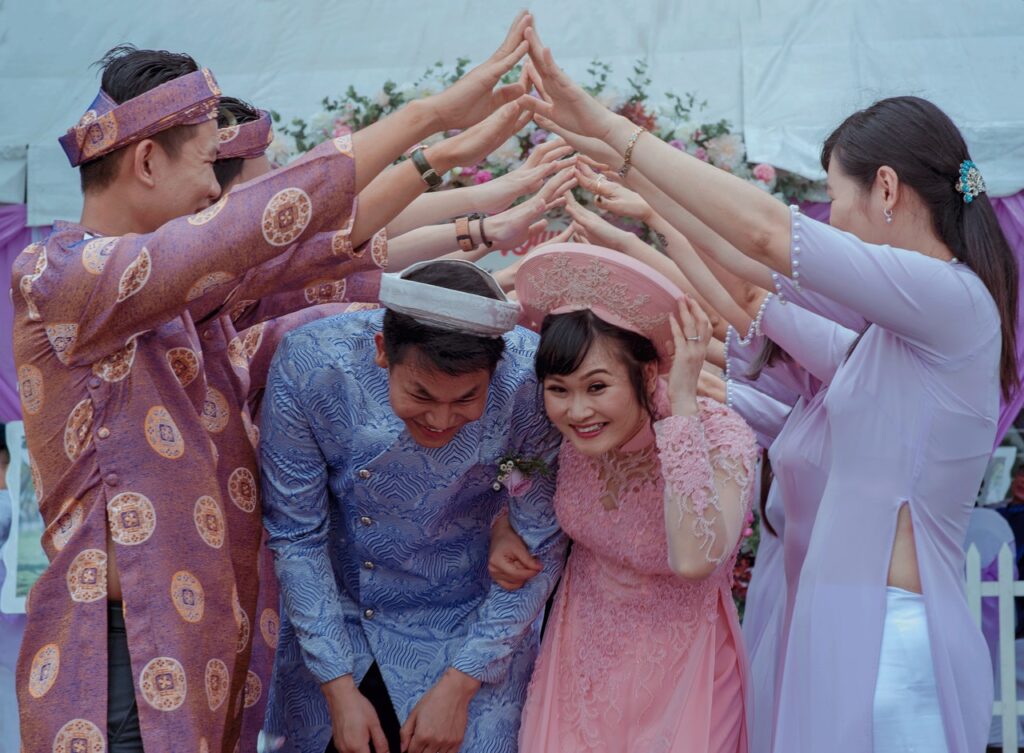
Source: pexels.com
Not all weddings are the same. If you want to serve a large clientele, you need to be aware of the several kinds of weddings happening in your region.
Wedding traditions are highly dependent on culture and religion. Thus, you need to be aware and sensitive of these matters.
You can ask your client for that information, but seeking all of the information about this from a client may make you appear ignorant.
The best thing to do is to take time and study various religions and wedding ceremonies in your region. Since the modern world is evolving with mixed demographics, there’s a good chance that your country/city will have at least two different kinds of wedding traditions going on. Knowing the meaning of these traditions will help you take appropriate photos that the client will feel satisfied with. Otherwise, you may take a great shot which seems great to you but offensive to the family!
Attend Wedding Ceremony Rehearsal for planning
Now that you know the kind of traditions your client follows, you’ll also know whether they’ll have rehearsals for it or not.
They could rehearse for dance, music, or anything at all. You can always ask them to be sure.
It’s best if you can gain permission to attend their rehearsals. The rehearsals will give you a visual of what’s to come on the day of the wedding. The ceremony is a special moment, and this is one of the things you must capture neatly. Having an idea of it beforehand will help you visualize frames and prepare your shot list better.
Pre-Wedding Photoshoot Ideas
Why not go on a date with the couple? They’ll be paying for it, so no harm in being the third wheel!
Jokes aside, pre-wedding photography is trending. A lot of parties like bachelor parties, engagement ceremonies, bridal showers, get-togethers occur before the wedding. You can always capture these photos which would create a complete package for the wedding album.
Of course, this will cost extra. And that’s something which you should communicate with the client, alongside writing it in the contract. However, if the client does hire you after all of these things have taken place, it’s completely out of the equation.
Keep an Open Line of Communication

Source: pixabay.com
The wedding can get delayed, postponed, or even canceled! Venues may change, budget issues may arise, and a lot of unexpected things can happen from the client’s end. It’s your responsibility to keep multiple channels of communication active so that they can inform you.
In some cases, they may forget to communicate with you. That’s why it’s a good idea to keep communicating from your end.
This may be something small as a message every 2 days. You don’t want to go to the wedding venue and end up in an empty hall!
Hire Personal Assistants
Assistants may lower your profit margin. But it will improve your service including the quality of photos that you’ll capture.
These assistants will be moving stands around, capturing photos, and things that will require hands other than your own.
Providing good service with a lower profit margin is better in the long run. You will have a good portfolio and review, ensuring the chance of getting clients again in the future.
Communicate with Other Vendors
You’re not the only service provider at the wedding. There’ll be stalls, shops, bands, DJs, makeup artists, florists, bakers, wedding officiants, and more.
You’re the only service provider that will be dealing with all of these vendors simultaneously. How? For each and every activity/service that these vendors provide, you must take beautiful photos.
Knowing how the florists will decorate the venue will give you an idea of how to compose your shots. Knowing how the makeup artists will decorate people will give you an idea of which kind of portraits to capture. You can also provide suggestions to these vendors to do things slightly differently to better suit the photos, but it’s not mandatory. What’s mandatory is that you’re aware of the things going on in the wedding and how it’ll be going on as well.
Organize Your Photography Gear
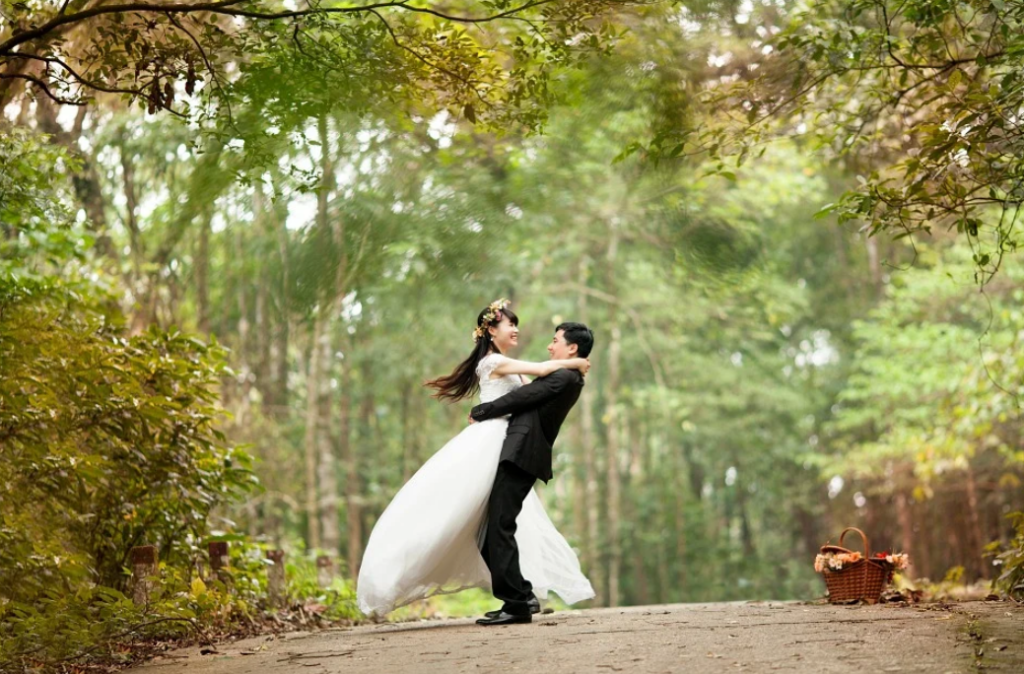
Source: pixabay.com
Never carry your gear in a lumped pile. Keep them compartmentalized and organized. Purchase bags for tripods, stands, lenses, and everything else. During the wedding, when you’ll be switching between multiple types of equipment, organizing things will make it easy to locate and reduce the risk of losing anything.
Choosing The Right Camera Settings
This is a no-brainer, but needs to be said nonetheless! Adjusting the camera settings is critical for any kind of photoshoot. A wedding is not like a fashion shoot or a product photoshoot. At a wedding, you won’t have time to think or prepare.
The ISO, aperture, and shutter speed are a few of the things that you’ll need to keep changing spontaneously. A dimly lit scenario may require a higher ISO and vice versa. A photo with a nice background may complement a wider aperture to enhance the depth of field, but the next photo may ask for something entirely different.
Thus, you must keep the sense of adjusting your camera settings as you go through the day, ingrained in your mind. A good habit is to create location-based presets beforehand. This will make switching between settings much faster.
Bridal and Groom Cover-Up
Your work is cemented only after a perfect cover-up photoshoot.
Brides and Grooms spend a lot of time and money on preparing themselves. Not only do you need to capture photos of them, but you also need to ensure that it is as stylish as it can possibly be.
● Bride Cover-Up – The dress that the bride will wear depends on their culture. You need to be aware of this as the style of the photo highly depends on their dress. If they’re wearing a saree, it’s good to frame the delicate intricacies of the dress. If they’re wearing a gown, frame accordingly.
● Groom Cover-Up – Same rules apply to the groom. Some will wear suits, some may wear sherwanis, some may wear ethnic clothes. Pay attention to their clothing and figure out which background will suit it best.
Couple Poses for Wedding Photography
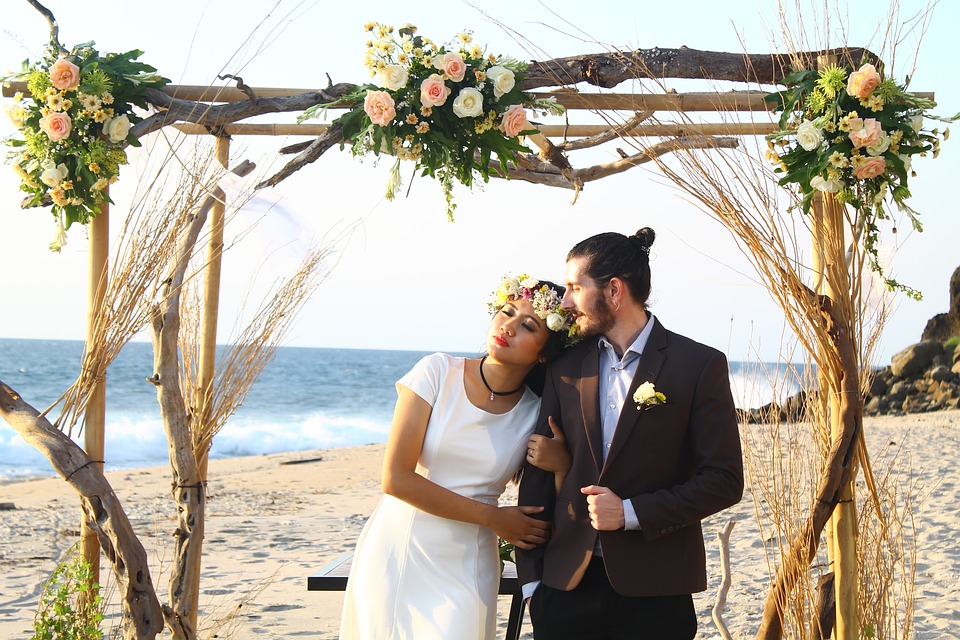
Source: pixabay.com
Cover-ups also mean the couple’s shots along with individual shots. However, not all couples will know how to pose together in such tightly knit dresses.
It’s your duty to help them position themselves, even if it means suggesting to them how to fold their arms for the pose.
Remember, they’re not photographers; you are. When the end result turns out great, they will appreciate your effort.
Group and Family Shots
Along with cover-ups, you should dedicate a portion of your time to taking family pictures. These pictures involve shots with the parents, in-laws, cousins, extended families, friends, etc.
When the client receives your submission, these are the first things that they will search for. Hence you should ensure that you capture these in the best possible manner possible.
Prepare for Unexpected Moments
There will be shots outside your list which you must be prepared for. The parents may laugh while dancing, children could be playing a prank on the groom, a caterer may sneak a bite in his mouth!
All of these moments are precious. Even though the client may not specifically ask for them, when you do present it to them, they will have a greater sense of appreciation for your work and view your service more seriously than just a photography team. You will certainly be referred to by others, that’s for sure!
Use Natural and Artificial Lights
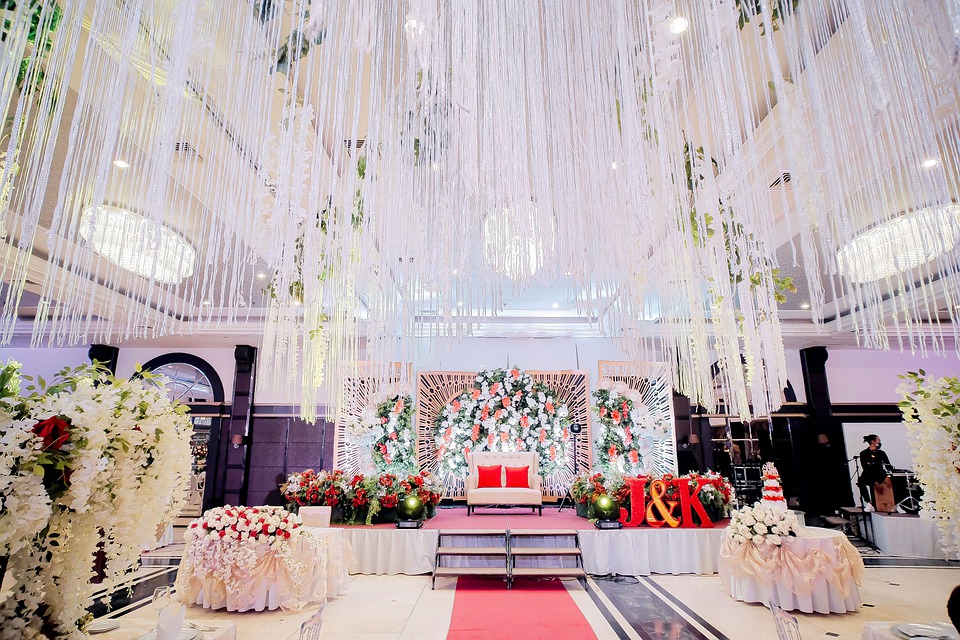
Source: pixabay.com
Most venues will be a mix of outdoors and indoors. In those cases, you can definitely integrate natural light into your images. It’s no secret that sunlight presents luminosity and warmth to a photo that no other artificial light can.
Don’t take artificial light for granted either. This light will cover up spaces where the sun won’t be able to reach.
However, if the wedding is completely indoors or is taking place at night, you need to allocate a lot of artificial light. This will evidently change your approach to the photoshoot as a lot of locations will be unavailable to shoot at night.
Don’t Ignore the Little Things
Starting from muffins, cakes, desserts, pets, flowers – everything matters! These are all parts of a wedding, and your album shouldn’t consist of multiple images of the same thing.
Keeping an eye out for these little elements will help enrich your submission. That’s where assistants will come in handy – you can assign a photographer solely to take pictures of such things.
Wedding Couple Outdoor Photography
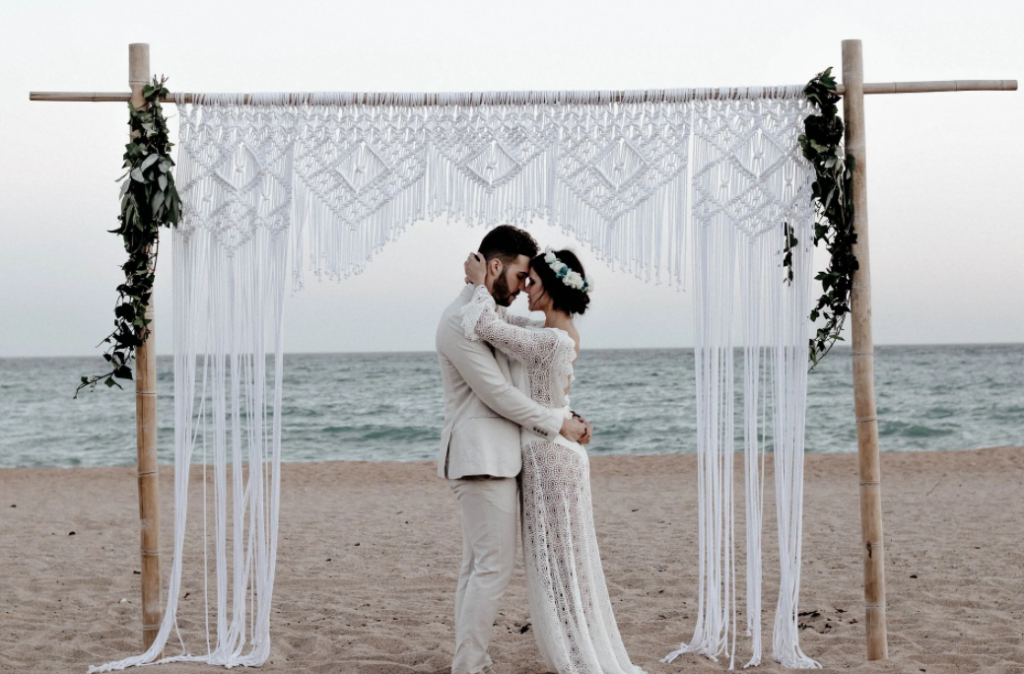
The venue isn’t only where the wedding is. It’s everywhere! Wherever the couple goes, you can follow.
You can go to a remote location within the venue to take some unique photos with the couple. Additionally, they can go to a beach with the “just married” car, all of which you can capture. All of this must be contracted of course. You can’t just tag along with them without contractually agreeing to it!
Keep Learning from Each Wedding You Shoot
Every experience is an opportunity for learning.
With each wedding you shoot, you will know what you did right and what you did wrong. It’s important that you take these experiences into your heart and improve upon them. A wedding photography service is not cheap by any means.
In order to justify your costs to present and future clients, you must keep improving day by day. There will be a point where you won’t have to explain your specialties to the client, but they will automatically know.
Wedding Photography Post Processing
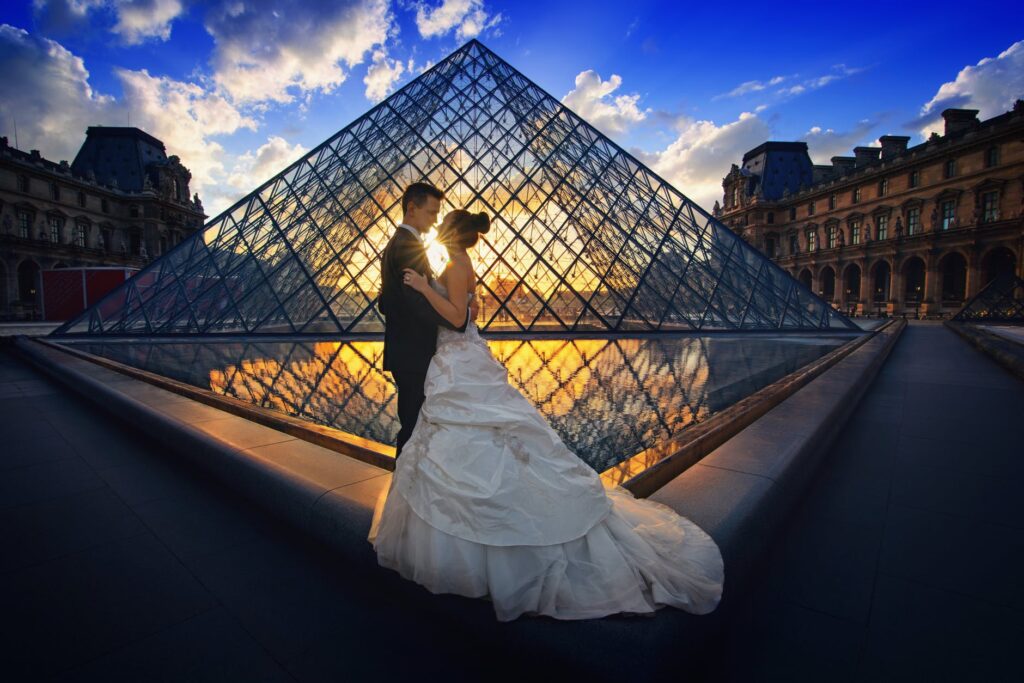
Source: pexels.com
Post-processing is a critical element of photography. No matter what niche you serve, how great you capture photos, you need to edit your images. But will you edit so many images all by yourself?
A wedding contains hundreds and thousands of images. As your business grows, you’ll be shooting multiple weddings.
Imagine the number of images that you’ll have to edit.
Thus, it’s best to outsource post-production work to companies that specialize specifically in batch-editing.
OffshoreClippingPath.com, ClippingPathStudio.com, and CobwebsDesign.com are a few which come to mind. They are some of the best in the industry which serve clients globally.
Of course, you can make your own choice through a quick google search. But be wary, because time and quality are big concerns. Letting all your hard work go to waste by choosing a lower-tier editing service won’t hurt their business in the long run, but it’ll hurt your business!
Wedding Photography Mistakes That You Should Avoid
Tips aren’t just tips to enhance your work! Tips also mean things you need to warn yourself with. These are vital mistakes that no photographer should ever commit.
Not Preparing for Severe Weather
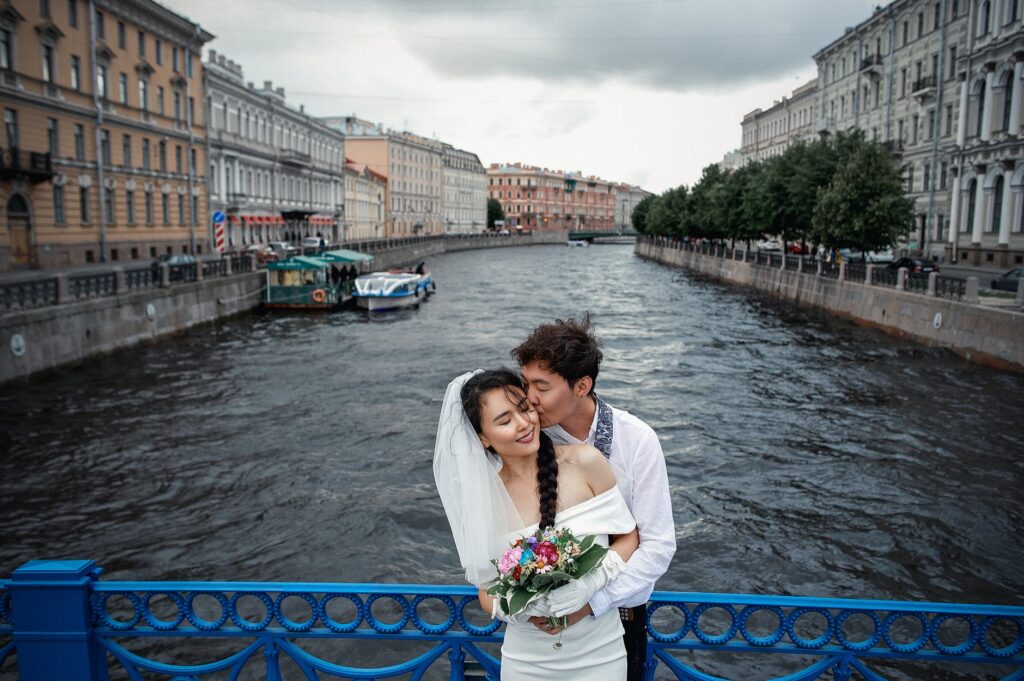
Source: pexels.com
Nature is unpredictable. It could rain, storm, or fog up anytime, regardless of what the weather report said.
Always prepare for these scenarios. You won’t be able to change the weather, but you’ll be able to change how you snap pictures throughout the weather. For example, carrying waterproof equipment is a good strategy. It may rain and slow down the wedding, but it won’t slow down your photoshoot!
Interfering with Your Subjects
Don’t ever interact with your photo subjects unless it is urgent! Everyone at the wedding should feel that you and your team are almost invisible. You’re there doing your work, but they don’t need to know that you’re doing it.
Not Signing The Contract
We’re mentioning this twice because this is the mistake that will cost you everything. With a contract, you have legal backup no matter what happens. Without it, if the client refuses to pay for any strange reason, you’re completely doomed.
Not Getting Another Shooter
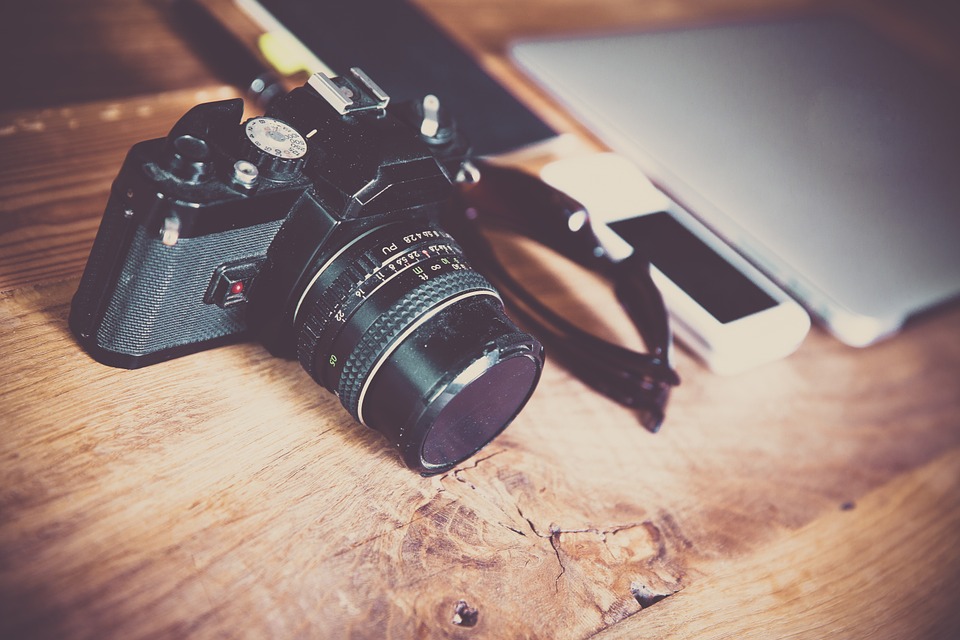
Source: pixabay.com
There are a lot of things going on at a wedding. We’re sure you’re aware of that now by reading the entire article.
You alone can never capture so many things. You will need not one but multiple shooters to capture everything that’s happening. This does depend on the budget and location. If the client has a limited budget for multiple shooters, you should inform them that this will affect the variety of photos that they may receive.
Not Planning for Mistakes
Contingency plans are common for businesses. You should create these plans not only for your photography business on a large scale but also for photoshoots on a smaller scale.
What happens when a tripod breaks? Or an assistant gets sick? Or your camera runs out of memory? Not to be grim, but the battery could also die suddenly.
Planning for these scenarios will help you tackle such disasters. And trust me, there will be disasters!
Not Knowing the important Guests
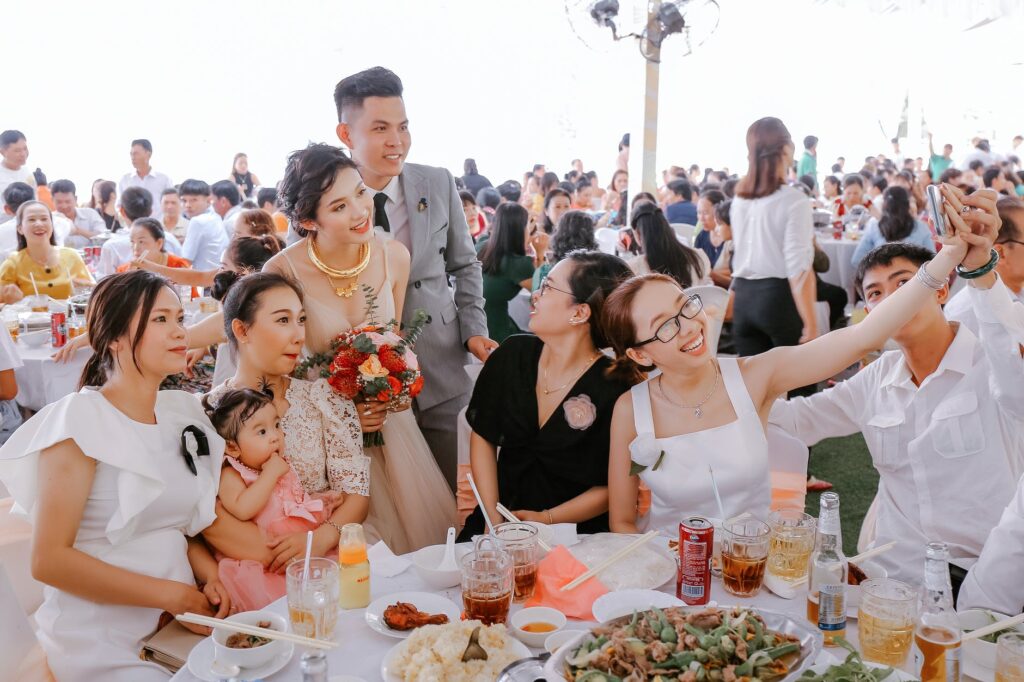
Source: pexels.com
Not all families are the same. Some families have guests who have higher importance than family members themselves. It’s not your place to judge, but it is your place to know who has higher importance to your client.
It could be the employer of the groom, a politically affiliated person attending the wedding, and a lot of unexpected people.
Along with the core guests, you should be aware of these important people coming to the wedding. They don’t have to be important in general, but as long as they’re important to your client, you need to allocate space to capture photos of them.
Losing Patience
It’s probably clear that wedding photography has multiple facets! This is no easy equation that you can solve. Problems will keep on arising ‘til the day you submit your photos and the client pays fully.
Throughout the entire process, you cannot lose patience. It’s understandable to feel unnerved being the leader of your photography team. But you have to treat it like your child. If you are serious about growing your business, you need to be patient, just like a serious parent is with their children. Occasional hiccups may happen, and that’s fine, as long as you’re working to improve your mentality.
Conclusion
Now that you know how to photograph a wedding from A to Z, you can fearlessly strive in the wedding photography market. If the article helped you, don’t forget to share!
